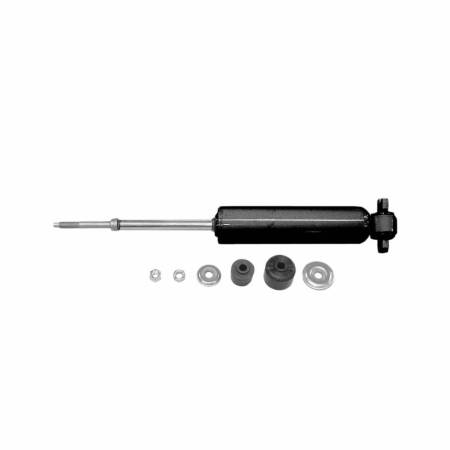Q: Is there a difference between a shock and a strut?
A: Yes, though shocks and struts perform a similar function, they vary greatly in their design. Struts are an integral part of a vehicle's suspension system, providing structural support for the vehicle and, as such, are a safety subsystem. Shocks work separately from any structural function, simply absorbing and damping the bumps from the road.
Q: Do gas charged shocks or struts contain oil?
A: Yes, all shocks and struts use hydraulic fluid (oil) to control damping. A gas charged shock or strut uses high-pressure nitrogen gas to reduce oil foaming during high-speed damping, and therefore maintains performance.
Q: Can I check my vehicle's shocks for wear?
A: Yes, it is possible to do a quick check at home for wear on your vehicle's shocks or struts. You can look for any physical damage to the shock or strut housing or any leaking - this is especially common on rear units that tend to have stones kicked up by the front wheels. You can also perform a bounce test by taking each corner of the vehicle and pushing down hard. The corner should drop, rise and settle again. If the body continues to move up and down, there's a good chance your shocks need to be replaced. Though these home tests can indicate worn shocks or struts, it is also recommended that you take your vehicle to a qualified service technician and let them do a thorough inspection every 12 months or 12,000 miles.
Q: Should I have my vehicle aligned after replacing my shocks or struts?
A: Yes, if you are replacing your vehicle's struts. However, it is not necessary to get your vehicle aligned when replacing your vehicle's shocks unless there was or is a previous issue.
Q: Do I need different shocks for front, rear, left, or right applications?
A: Yes, it is important to choose the correct shock or strut for your vehicle model and year, as well as for the location in the vehicle.

 WARNING: Cancer & Reproductive Harm -
WARNING: Cancer & Reproductive Harm -
Write the First Review!